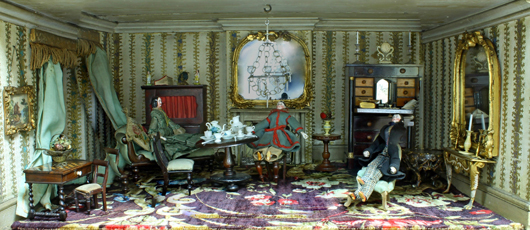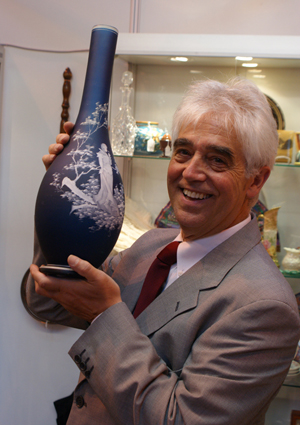
LONDON – One of the most reliable indicators of the popularity of an exhibition, art fair or other public event, is the length of the queue that forms waiting for the doors to open. The recent David Bowie exhibition at the Victoria and Albert Museum had crowds snaking down the Cromwell Road every morning throughout the exhibition’s run. 
The V&A queues were significantly boosted by the huge influx of overseas visitors to London this summer, which has been attributed to the success of the London 2012 Olympics, although this year’s unusually fine weather must have helped too. Whether this will continue into October when Frieze Fair mania once again grips the capital remains to be seen, but meanwhile it is not only London that has been basking in the warm glow of increased tourist revenue.
This year’s Antiques for Everyone Fair at the National Exhibition Centre in Birmingham also enjoyed what you might call the OVE—Overseas Visitor Effect—with organizers Clarion Events reporting that, “Crowds of eager visitors, including American, Chinese and French buyers, thronged the NEC concourse on the opening morning.” 
Those providing joyful reports of booming business included antique glass specialist Jeanette Hayhurst from Tetbury, who spoke of “my best fair ever,” Arts and Crafts dealer James Strang of Glasgow, who said, “I’ve sold my two best pieces of furniture in the first hour,” and Steve Sly of Lyndhurst, who described the event as, “Our most successful fair for some time.” Another Scotland-based dealer, Eduardo Alvarino, endorsed these views, having made encouraging sales to customers old and new. His beaming grin for the cameras provided ample evidence of how pleased he was with the week’s business.
Such positive dispatches ought to be music to everyone’s ears given the gloomy mood of the last two or three years of a recession-dampened market. The auction circuit seems equally encouraging judging from by recent results from around the regions.
They say that valuation is an inexact science and few art market professionals would disagree. One of the most rewarding things for a regional auctioneer is to see the estimate he or she has carefully placed on a lot prior to the sale roundly demolished when the object comes under the hammer, even if it occasionally causes some embarrassment. If the disparity between forecast and final price is glaringly vast then a few delicate, postsale PR maneuvers might be required to deflect heat-seeking journalists. But on the upside, a bigger hammer means a bigger buyer’s premium. Furthermore, if an object turns up, the exact like of which the auctioneer has never seen before and no equivalent of which can be found in the historical price databases, then at least he or she will be ahead of the curve next time.
Something akin to this situation seems to have occurred at Tennants’ recent auction of collectible vintage textiles in Leyburn, North Yorkshire. The object in question was a late 19th-century red and white-striped “Bible Quilt” embroidered all over with images of animals and religious verses.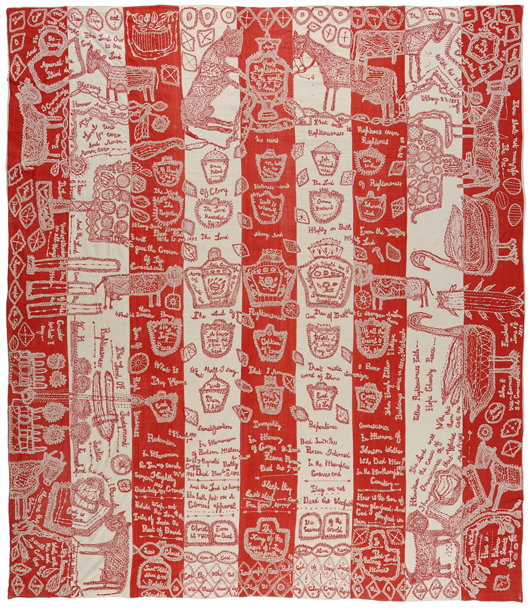
.jpg)
Now over to Duke’s in Dorchester where a sale of ceramics and works of in August gave rise to a not dissimilar example of the estimate/price equation. The sale featured a most unusual Meissen porcelain scent bottle modeled as a monk carrying a basket of fruit and a goose. So far so conventional, one might assume, but a closer look revealed a woman concealed beneath a sheaf of wheat on the monk’s back, her pink shoes sticking out at the bottom. 
An equally fascinating object at the same sale, and perhaps just as challenging to estimate with any great accuracy, was a Malines alabaster plaque, probably 16th century, depicting Jonah and the Whale. 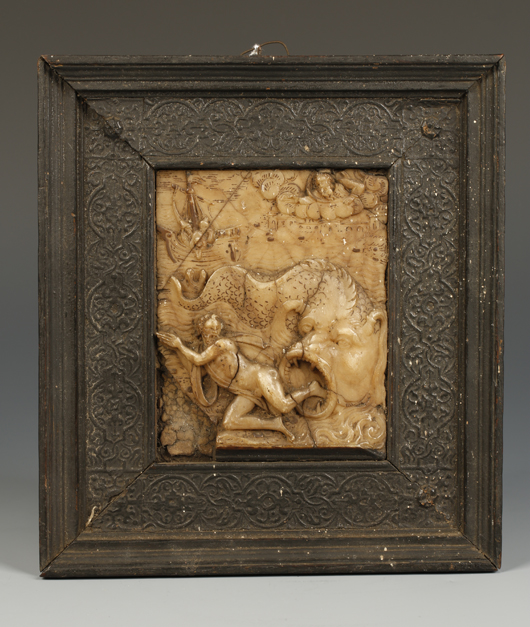
Duke’s sale also offered yet another reminder of how Asian works of art continue to beat forecast, even when they are as familiar as Cantonese bowls—a staple commodity on the provincial circuit. American collectors sometimes refer to these wares as “rose medallion,” and good examples are always in demand. This one was forecast at £200-400, but was hammered down for £1,000 ($1,550). 
From brush paintings to yet more brushes with celebrity. The public fascination with Diana, Princess of Wales shows no signs of abating, a full 15 years after her death. The forthcoming movie biopic based on her life seems certain to inform a younger generation of her enduring mystique. Meanwhile, at the International Fine Art and Antique Dealers Show in New York in October, London dealers Apter Frederick will be offering American collectors an opportunity to acquire a piece of furniture provenanced to Princess Diana (Spencer’s) family. Anyone with $850,000 (£550,000) to spend will have a chance to acquire the 1st Earl Spencer’s carved fustic and satinwood sofa, circa 1758-65. 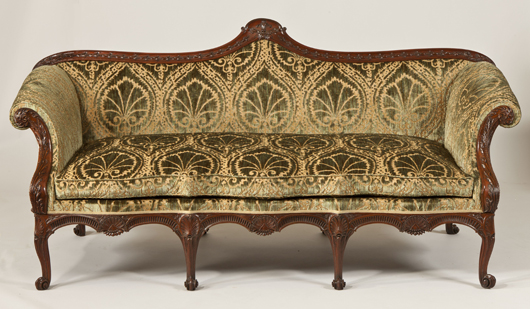
And finally, looking ahead, Chorley’s the Gloucestershire auctioneers, have been given instructions to offer a particularly fine example of an early Victorian doll’s house at their sale of collectible toys, dolls and games in November. 